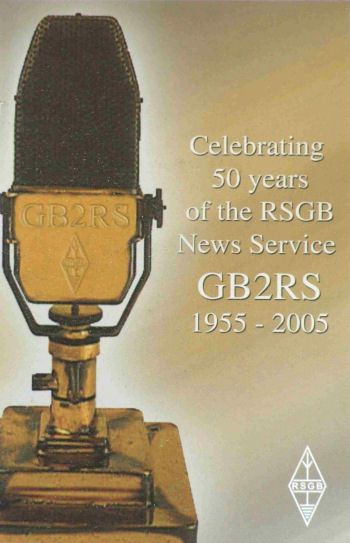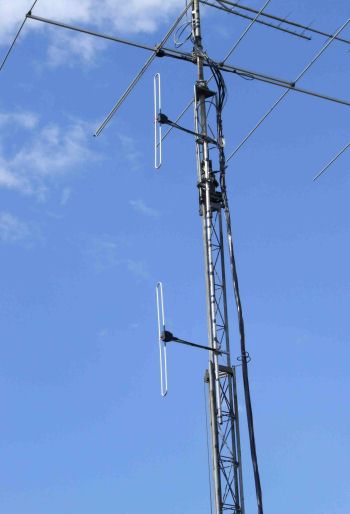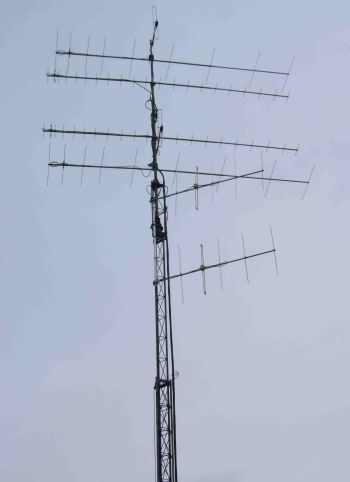Amateur Radio - GB2RS
Up until 1955 the BBC was the only organisation officially permitted to broadcast in the UK. Radio amateurs were, and still are, licensed to communicate one to another individually but not to broadcast to radio amateurs in general. In 1955 the General Post Office, who were the licensing authority at the time, authorised the Radio Society of Great Britain, representing radio amateurs, to also broadcast. These broadcasts take place on specific frequencies in the bands allocated to radio amateurs, not in the general broadcast bands, and are made on Sundays from the homes of individual RSGB members, using the special callsign GB2RS in place of their own. In the early years the GB2RS broadcasts gave an invaluable weekly update of amateur radio related news in between the monthly issues of the RSGB’s members’ magazine. Nowadays most people get their weekly news updates from the RSGB’s website, but there’s still (May 2008) a worthwhile audience for the GB2RS broadcasts from those without home internet access, those who like to listen to the news while doing other tasks, those with limited eyesight and those who just prefer to have the news read to them.

The RSGB GB2RS Golden Jubilee commemorative QSL card issued in 2005, ©RSGB
In 1984 I realised that the Aylesbury Vale area was poorly covered by existing local area GB2RS news readings on 145.525MHz FM (vertical polarisation) and offered to fill the gap. I was appointed as a GB2RS newsreader in November 1984 and continued until I stood down in late May 2008. During that time I was ably backed up by several other local amateurs who agreed to read the news in my place on Sundays when I was unavailable. They are Bill G6NB, Mike G8BQH, Mike G7FDL, John G1VLC, Martin G4PMG and Richard M1EAR.
One of the problems with reading the GB2RS news using FM is that most amateur radio transmitters are only designed for intermittent use, depending on the receive period of the transmit/receive cycle to cool down in between transmission periods. A news script takes up to half an hour to read, during which time the transmitter will potentially reach thermal equilibrium with, most likely, the thermal protection trip having operated before then. One of the earliest transmitters I used was home built, with 50 watts output. I later used a valve amplifier to give around 200 watts output and when that developed an intermittent fault I pensioned it off in favour of using my Beko HLV-1200 amplifier at a similar power output.
The earliest aerial I used was a JayBeam C5/2M colinear which gave good results, mounted on a scaffold pole mast at the end of the garden. It eventually failed from water ingress through the longitudinal cracks which developed in the glass fibre casing and I replaced it with a GP160 5/8 wave groundplane aerial of more modest gain. Wanting higher aerial gain I built a pair of full wave dipoles which I later transferred to the telescopic tower. Because of their length I mounted one on the top mast section and one on the section below, which complicated the cabling arrangement to cope with the telescoping action. They can be seen in the top photo on the Amateur Radio - G3MEH page. Later I compromised on gain by fitting two ½ wave dipoles, which were short enough to be both mounted on the same mast fixed to the top section of the tower.

The two half wave dipoles
They were mounted facing west northwest to, with the tower acting as a reflector, favour propagation towards the Aylesbury Vale direction.
Over the years I’ve had reception reports from better equipped amateurs as far afield as the south coast and the Isle of Wight, Swindon, Coventry, Corby, Rayleigh and Heathfield.
In mid March 2008 I was asked to temporarily cover the 10am London area newsreading which I did initially by moving the two dipoles up on to the rotatable mast, facing them east southeast at 10am and west northwest at 12 noon. To improve London area coverage I built two five element yagi aerials and mounted them fixed at east southeast.

The 2m vertical aerials May 2008
The yagi beam aerials were designed using CAD software, QuickYagi, courtesy of RaiBeam. They were very effective, allowing reception of several amateur radio repeaters in south Netherlands, Belgium and northern France.
